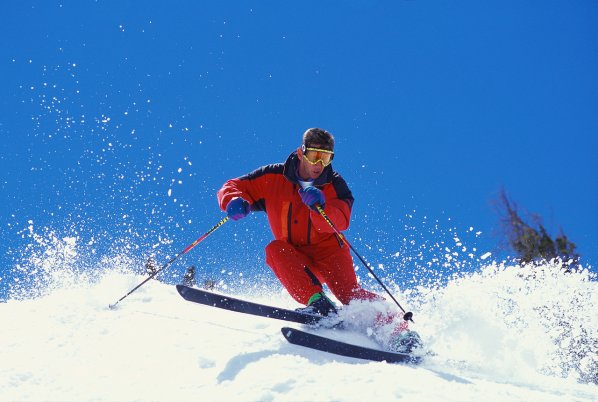BENEFITS OF LASIK SURGERY TO ATHLETES
Professional athletes – much like pilots and surgeons – rely on their vision to perform important daily tasks, both on and off the job. In the winter months, everyone seems to be skiing, snowboarding, or playing hockey. Whether you’re a weekend warrior, or star NHL player, you don’t have to endure the hassles that go with wearing contact lenses when participating in your favorite winter sport.

In addition to helping more than 75,000 patients (and counting), Dr. Joseph King has trained many other eye surgeons and has presented at refractive surgery meetings worldwide. In short, he is one of the true experts in the field – not only in North America, but also in the world.
Below we explore five winter activities and the athletes who could most benefit from LASIK.
1. Hockey
In addition to obviously having superior skating and balancing skills, hockey players must rely on excellent hand-eye coordination. The official dimensions of an NHL ice hockey puck are inch (1″) thick and three inches (3″) in diameter. Hockey pucks can reach speeds over 100mph, so hand-eye coordination is crucial. Washington Capitals defenseman Mike Green recently had LASIK eye surgery, and was back on the ice only three days later.
And it’s not only players who benefit from LASIK. Vancouver Canucks professional hockey scout Jonathan Bates also used LASIK to help further his career. He explains, “Every time I go to a hockey game, I don’t have to spend two or three minutes cleaning off my eye glasses prior to the game and between periods. I get to do my job and focus on the players”.
2. Snowboarding/Skiing
Purchasing a quality pair of ski goggles is the first step to improving your views on the slopes (insist on 100% UV protection), but it’s the quality of the vision behind those goggles that helps you most get down the mountain safely. Good peripheral vision is important for skiing and snowboarding, because you need to see 180 degrees from side to side to avoid speeding skiiers and boarders – not to mention other potential obstacles. Blurred peripheral vision is sometimes caused by glaucoma, which can often be treated by LASIK surgery. If you live for the thrill of jetting down the slopes, glasses can be an impediment. Get rid of them today.
3. Ice Skating
Canadian figure skater, and Olympic bronze medalist Joannie Rochett is an example of a winter athlete whose LASIK procedure changed her life, and her career. Struggling with clear vision and constant infections from contact lenses caused her to suffer when training. Figure skating is all about measuring distance and depth to land those intricate moves and jumps. LASIK was able to fix these issues for Joannie and many other patients suffering for poor vision.
4. Bobsledding
Most images you see of bobsledders are a blur, and that’s because they can reach speeds up to 118 mph (however, the average speed is about 60 to 90 mph.) Steering a bobsled down an icy chute with the gleam of the ice reflecting against your eyes is a high-risk situation. While most “pilots” or bobsled team members rely on touch and instinct, crashes are likely, and dangerous. Marks left by competitors’ runners and being able to see clearly through the protective visor are all advantages to having clear vision. Bobsledders also can’t wear eyeglasses, so LASIK is a great option for this type of winter athlete.
5. Snowball Fights!
Snowball fights are all fun and games – until someone gets hurt. How do you ensure the safety of your eyes (and winning)? First, be sure to wear proper eye protection to prevent potential eye injuries. Second, test your vision! With careful aim and precision, your snowball can hit its desired target. But this won’t be possible without clear vision! Come into King LASIK for a free consultation to see if you are a candidate for LASIK surgery.
Last but not least, remember to protect your eyes this winter. The winter season can be more dangerous for your eyes than you may think. Wear sunglasses, especially when the ground is covered in snow. Also, increase your eye moisture and use proper sports goggles. And if you think you may be a candidate for LASIK, don’t hesitate to come in and see us, (whether you’re a hockey player or not!).
